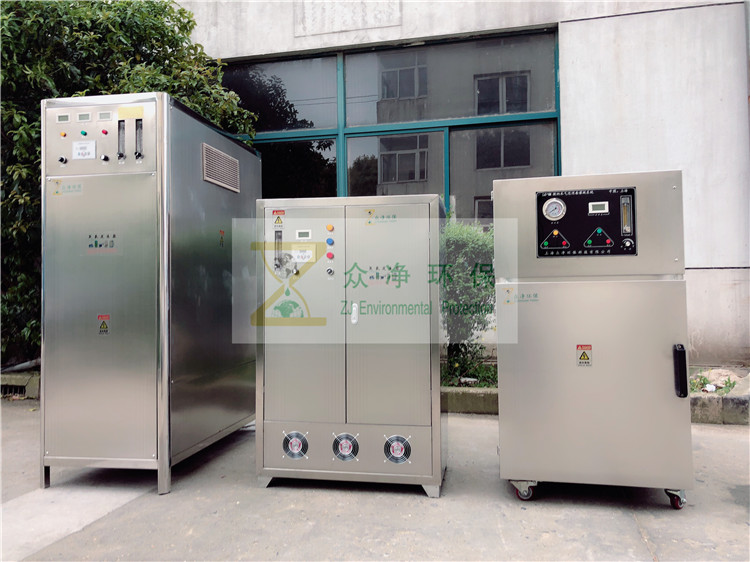Disinfection and sterilization technology of water-cooled ozone generator
Click:6366Date:2021-08-16 03:13:16
Introduction of space disinfection ozone generator
In gas phase conditions, the effect of ozone on killing microorganisms depends on these main factors: ozone threshold concentration, that is, when the ozone air concentration meets the concentration requirements, it can have the ability to kill microorganisms; Microbial species; Processing time; Ozone distribution mode; Temperature and humidity conditions in the space; Reducibility of indoor wall, ceiling, floor and other decorative materials.
Under the condition of gas phase, the killing effect of ozone on microorganisms is different. Experiments have proved that ozone has a strong bacteriolytic killing effect on human and animal pathogenic bacteria and viruses.
The environmental factors affecting the germicidal efficacy of gas-phase ozone are mainly temperature and humidity. Generally, the killing effect is good when the temperature is low and the humidity is high. The relative humidity is more than 70%, and the killing effect can be well reflected. This is due to the increase of relative humidity, which can expand the cell and thin the cell wall, making it more vulnerable to the penetration and dissolution of ozone.
Explanation of toxicity, corrosivity and safety of ozone: ozone is a non-toxic substance and a safe gas. Its toxicity is mainly due to its strong oxidation capacity. When the concentration is higher than 1.5ppm, personnel must leave the site because ozone stimulates people's respiratory system, resulting in respiratory system stress reaction and serious reversible injury, To this end, the Ozone Association (IOA) has formulated health standards: Ozone Association: 0.1ppm, exposure for 10 hours; United States: 0.1ppm, exposure for 8 hours; China: 0.15ppm, exposure for 8 hours
When the ozone concentration is 0.02ppm, people with sensitive sense of smell can detect it, which is called the sensory critical value. When the ozone concentration is 0.15ppm, it is the olfactory critical value, which can be smelled by ordinary people. It is also a hygienic standard point. When the concentration reaches 1-10 ppm, it is called the stimulation range. In fact, the safe use of ozone can completely ensure that human health is not endangered. Since ozone has been used for more than 100 years, there has been no death accident due to ozone poisoning.
In the specific use, ozone disinfection process should be separated from personnel, and all the ozone generating devices are automatically controlled. As long as the relevant parameters are set up, it is possible to achieve unattended duties. This is more reliable for the health of personnel than chemical disinfectant spray disinfection requires on-site training of specially trained personnel.
Ozone has strong oxidizability. Ozone can oxidize many metals. Aluminum, zinc and lead will produce oxidative corrosion in contact with ozone, but ferrochromium (stainless steel) containing 25% Cr will not be corroded by ozone.
Ozone is corrosive to ordinary rubber, so corrosion-resistant silicone rubber or rubber products with corrosion-resistant agent should be used in application.
High voltage power supply is generally used for ozone generation, so it should not be used in the environment with conductive gas or hydrocarbon containing medium, and the user must implement it safely according to the operating procedures.



 Home
Home


